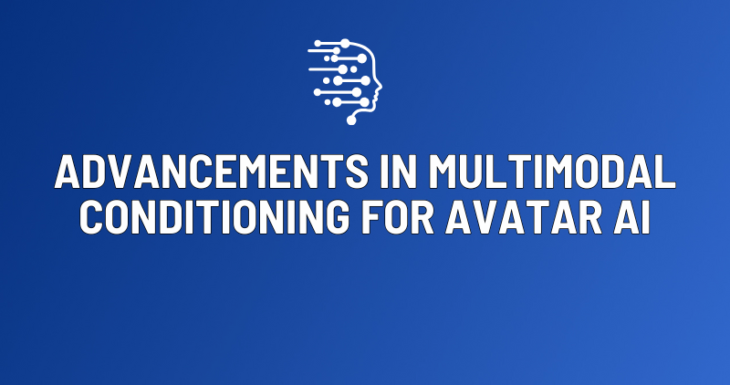At Terlouw Artificial Intelligence, we are pushing the boundaries of digital content creation with our Avatar AI project. Our latest focus is on implementing advanced multimodal conditioning techniques to enhance the realism and interactivity of AI-generated avatars.
Multimodal conditioning: A new approach
Traditionally, AI-generated avatars have been driven by single-input conditioning, such as only audio or only video. However, we have introduced a mixed training strategy for multimodal motion conditioning, enabling our model to leverage multiple input signals simultaneously.
Our approach integrates text, audio, and pose data during the training phase, allowing the model to learn natural motion patterns and generate realistic human videos from weak input signals, particularly audio-driven motion synthesis. By combining various conditioning signals, our avatars achieve superior synchronization between facial expressions, head movements, and lip motion.
Scaling training data for improved performance
A major challenge in training AI models for human animation is the limited availability of high-quality motion data. Our mixed training strategy addresses this issue by combining datasets with different conditioning signals.
- Previously excluded datasets (due to strict filtering criteria) can now be incorporated in weaker conditioning tasks, such as text-based motion synthesis.
- This data augmentation enables the model to learn diverse motion patterns, significantly improving the realism and adaptability of AI-generated avatars.
By utilizing large-scale datasets with various conditioning signals, we have significantly improved motion diversity and natural expressiveness in our avatars.
Applications and capabilities
Our avatars can now generate lifelike human videos from a single image using various motion signals, such as:
- Audio-only input (speech-driven facial and head movement synthesis)
- Video-only input (reconstructing motion from a reference)
- Multimodal input (combining audio, text, and motion cues for enhanced realism)
Furthermore, our avatars support multiple rendering styles, allowing seamless adaptation to different visual and auditory aesthetics. This breakthrough enables ultra-realistic AI-powered avatars suitable for applications in content creation, virtual influencers, AI-driven storytelling, and more.
We are excited about these advancements and look forward to further refining our multimodal AI pipeline to push the limits of generative avatar realism.
